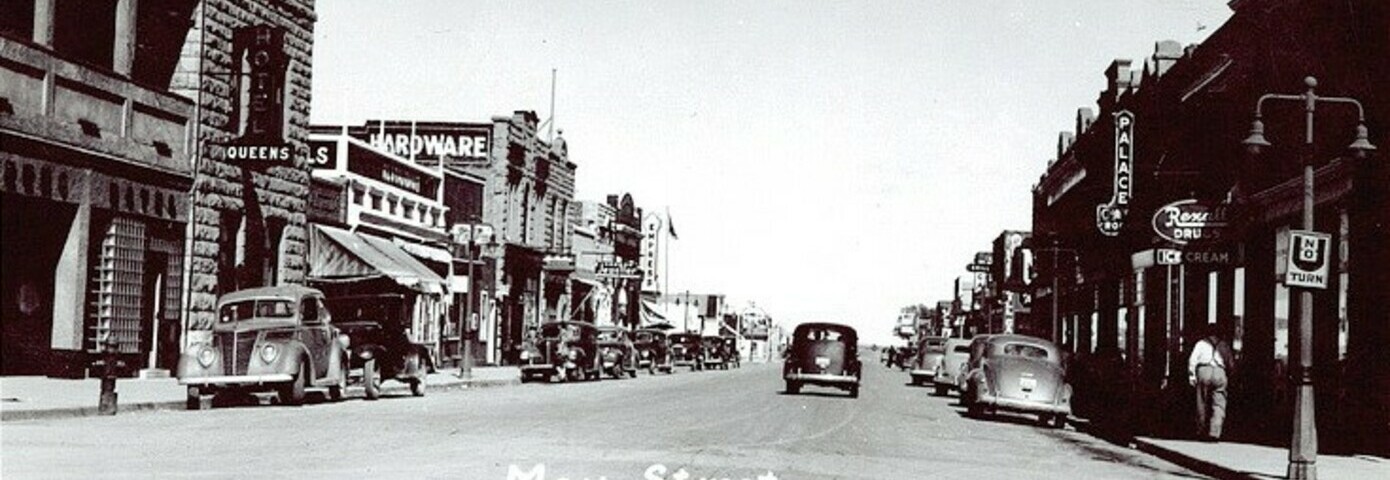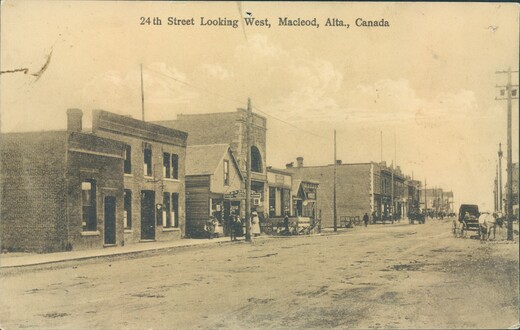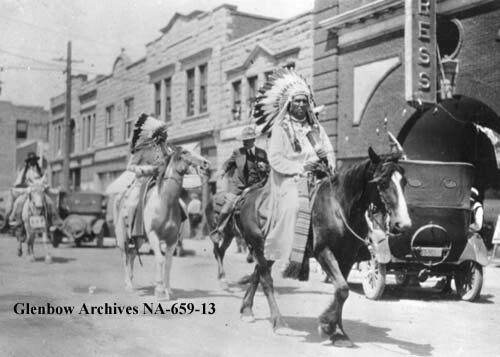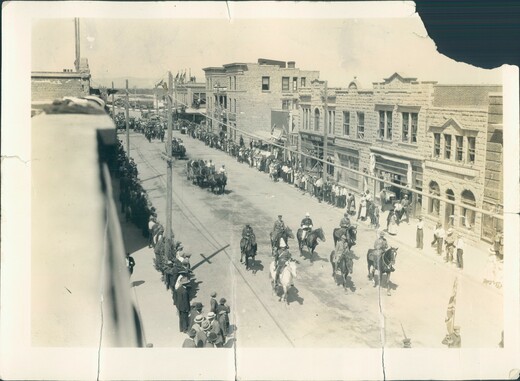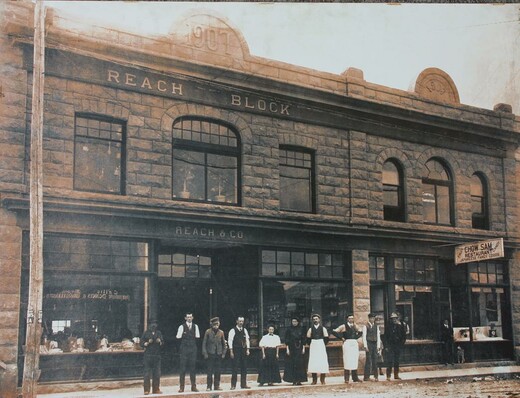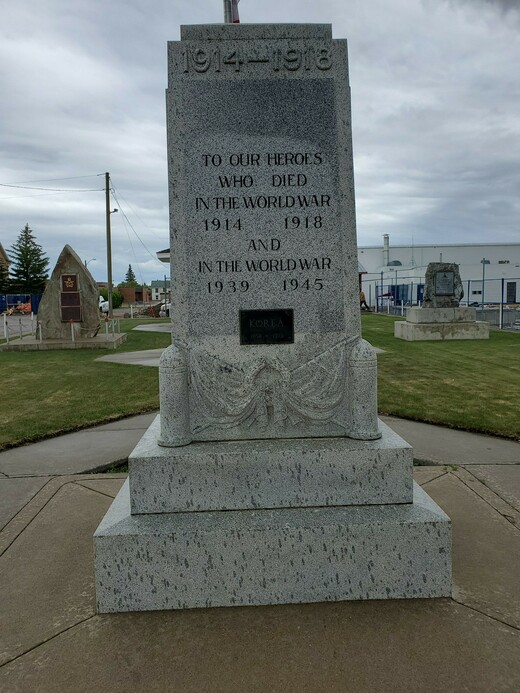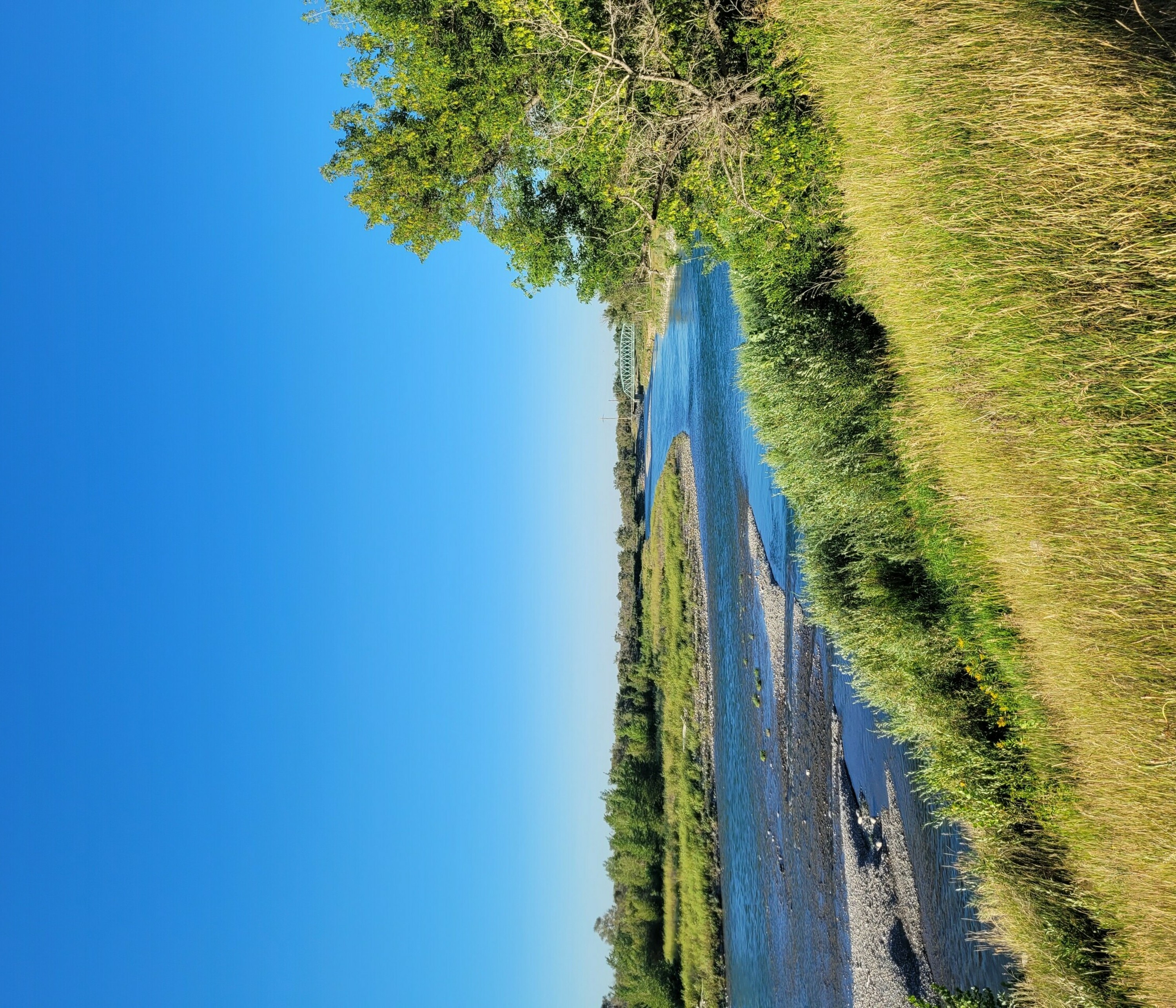Fort Macleod
Fort Macleod’s history goes back to its days as a barracks for the North-West Mounted Police (NWMP) that was set-up in the late 19th century to deter American whiskey traders. A small settlement sprang up outside the fort walls, and when the NWMP moved south of the Old Man River in 1884, the people went with it. The community was incorporated as a town in 1892, dropping “Fort” from its name to become the Town of Macleod. A commercial centre began developing along present day 24th Street (Main Street), where a collection of wooden structures housed the town’s earliest businesses.
Indigenous Population
This area has always been inhabited by the Blackfoot people. They lived a nomadic lifestyle, following the food sources (buffalo) for the most part. The tribes did not always get along though, with many battles taking place over the years.
The Blackfoot and Cree nations were fighting to gain control of the Cypress Hills boundaries and in the fall of 1870 there was a battle between them called the “Battle of Belly River.” Big Bear and Little Pine led the Cree’s and attacked a Blood First Nations camp. The next day, well armed Peigans entered the battle and defeated the Cree, approximately 200-400 Crees died in the battle. Eventually the Cree and Blackfoot negotiated peace and access to the Cypress hills. This site is now known as Indian Battle Park in Lethbridge.
North West Mounted Police
Fort Macleod was founded in 1874 with the arrival of the North West Mounted Police, led by Colonel James F. Macleod. The NWMP force had been formed to protect Canadian sovereignty in the West. This interest was being threatened by the disruptive and unlawful practices of American whiskey traders who were trading deadly “firewater” for buffalo robes, wolf skins, and other items of value. The arrival of the NWMP put an end to the illicit trade in the Blackfoot, Blood, and Peigan Indian territory. Moreover, they established an official federal presence in the North West Territories of Canada, which were being eyed by the United States for possible annexation, and effectively opened the Canadian West to settlers. Fort Macleod was the first permanent police post in the British North-West.
The original fort was hastily erected of log walls and rough planking, sod roofs and dirt floors. It was located on an island in the Old Man River valley, about one mile east of the present town. The island, known as Macleod Island, was chosen for the site of the fort upon the arrival of the NWMP in mid-October 1874, as it was both a picturesque and defensible location. However, it diminished in attractiveness with the arrival of spring flood waters, which rendered the site practically inaccessible. Nevertheless, a town quickly sprang up around the fort. By 1884, the NWMP relocated their quarters to the south bank of the Old Man River, west of the present Town of Fort Macleod. (Today, you may visit the partially reconstructed NWMP 1884 Barracks Provincial Historic Site which was officially Commissioned, under the Alberta 2005 Centennial Legacy Program, on August 25, 2005.)
The town soon followed and incorporated in 1892. It became a bustling settlement, complete with a boardwalk-lined main street and a variety of commercial interests providing services to the region’s ranching industry. Development proceeded until 1906 when a fire destroyed most of the wood frame shops and businesses on Main Street. As a reaction to the fire, a bylaw was passed requiring future buildings to be constructed of stone or brick, thereby changing the look of Main Street forever.
Building the Town
Beginning around 1911, Fort Macleod entered a period of optimism fueled by speculation that the town would become a pivotal railway center – the convergence point of no less than ten rail lines. Real estate prices soared, newly opened sub-divisions rapidly sold out, and commercial building flourished. A Board of Trade promotional pamphlet advertising Fort Macleod as the hub of southern Alberta and anticipating its ascendancy as a major business and transportation center, aided in attracting new settlers and businesses. Scottish, English, and Irish immigrants made up the majority of the town’s population. A small Chinatown was the focus of a vital Chinese community. Other nationalities including French, Italian and Dutch were represented on a lesser scale.
Most of the two-storey brick and sandstone buildings lining the two main business thoroughfares were constructed during the pre-1914 boom years. Much of the material used was produced by local brickyards, lumber mills, and stone quarries. The masons and builders who erected the fine structures bestowed upon the town the legacy of building styles, traditional values, and craftsmanship brought with them from England. Residences of the 1897-1914 period show the same quality and attention to detail found in the downtown buildings, reflecting the availability of materials and craftsmen and an interest in predominant period styles.
Unfortunately, there was a marked slowdown in construction in 1914, primarily due to the outbreak of the First World War. Throughout the period of expansion, town officials borrowed extensively to provide the level of services expected by the optimistic towns-people. In 1924, the accumulated debt forced the town to accept a low interest loan with the caveat that the town refrain from borrowing money for improvements or expansion for fifty years. This commitment, combined with the depression of the 1920s and 30s and World War II, effectively halted significant new construction or development with the exception of the airport buildings constructed during World War II. As a result, Fort Macleod has been left with a collection of distinctive historic buildings – residential and commercial – which make an important contribution towards the preservation and interpretation of Alberta’s history.
Today, people from around the world are part of the Fort Macleod community. In addition to our native people, and the original settlers from the British Isles, we have people with heritages from Germany, Holland, France, China, Japan, the Philippines and more. Everyone brings their own culture to our town to make the tapestry richer.
During celebrations you may see teepees, ethnic dancers and experience foods from countries you have not yet been to.
World War II
Macleod area residents served in both World Wars and memorials were set up to commemorate those that lost their lives. World War II, however, was a bustling time for the town, with a British Commonwealth Air Training station being set up. The administrative and operational control was the responsibility of the Royal Canadian Air Force (RCAF). The No. 7 Service Flying Training School (SFTS) began operation in December 1940, flying the twin engine Anson, and ran until November 1944. (The high school athletic teams are known as the Flyers and Ansons to commemorate this piece of history). After the war the station remained open and hosted No. 1 Repair Equipment and Maintenance Unit (1 REMU) which was responsible for storing and repairing RCAF aircraft. The station is now the Fort Macleod Airport. Many of the old buildings used during the BCATP days are still in use for local industry.
Just sixteen kilometers (ten miles) east of Fort Macleod, another RCAF Station was located at Pearce. On March 17, 1942 twelve Canadian Pacific Railway coaches filled with 32 officers, 304 airmen staff plus pupils arrived from West Kirby, England. This Elementary Flying Training School was only in operation for five months. The official reason was to provide room for the expansion of air observer schools. Unofficially, the suspicion was that the famous southern Alberta winds were simply too difficult for novice pilots to deal with. Stearman biplanes and de Havilland Tiger Moth biplanes were the aircraft that flew out of this location for the short period of time.
Provincial Historic Area
Did you know the Town has only one of two provincial historic areas as designated by the Province of Alberta? Nestled in what is commonly known as our downtown Main Street area, this area features iconic buildings rich in history. Well known for its impressive commercial buildings of brick and sandstone masonry.
To learn more about our historic area, click here.

